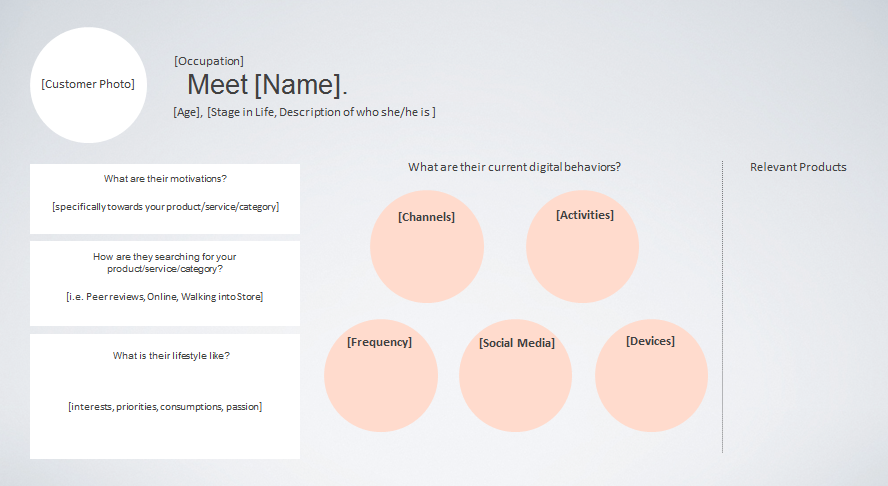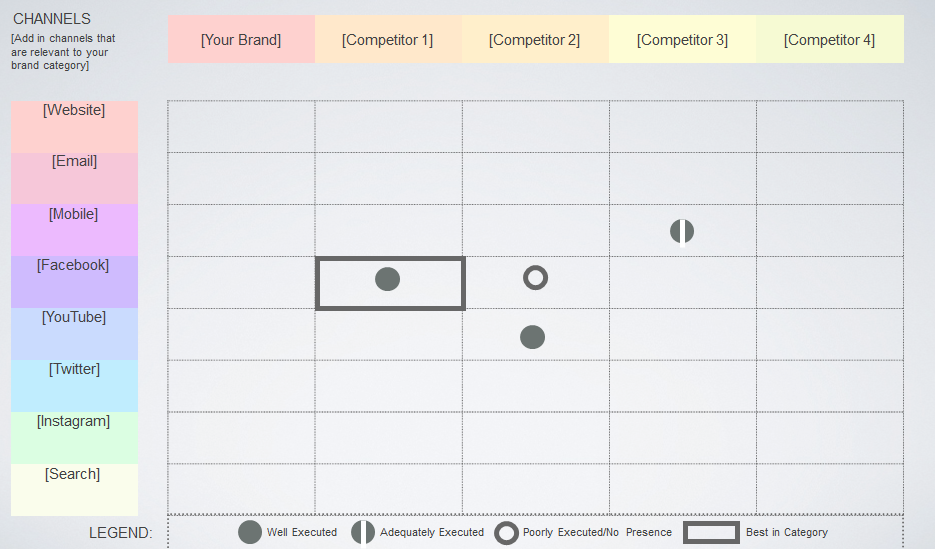Getting Started: Designing a Digital Blueprint
As any successful businessman would know, the key to any successful strategy lies in developing a robust blueprint for its execution. Designing a digital blueprint for your business revolves around acquiring three key areas of knowledge – knowing your customers, knowing your competitors, and knowing your digital channels.
1 Know your customers: Create Customer Personas
In an ideal world, consumers would be falling over each other to buy and consume our products and services. But just as money doesn’t fall from trees, consumers need to be actively acquired - we need to know who we are selling to and what they are like, before we can decide how to engage them.
Thus, a crucial step in formulating your digital blueprint lies in defining your target customers by creating Customer Personas.
Customer Personas are a simple and easy way to bring to life your key target audiences. You can build as many customer personas as you have separate target audiences, with each persona clearly defining the key features of each segment.

The rule of thumb in building customer personas is: the greater the details, the more targeted and effective your digital marketing strategies. Details on each customer persona should be inclusive of, but not limited to:
-
- Their demographic information (e.g., age, name, occupation, stage in life).
- Their consumption behavior - how they research, buy and use your products/services (e.g., use of search engines, retail walk-ins, occasion of usage).
- Their current digital behavior (e.g., Internet usage, social media presence,
use of smartphones). - Their perceptions of your product/service category (e.g., motivations, preferences and expectations).
2 Know your competitors: Conduct a Competitive Scan
A competitive scan involves a detailed analysis of the competitive landscape of your industry. This involves identifying your key competitors, assessing their strengths and weaknesses, and evaluating the similarities of product offerings and target markets.

The following is a guideline on developing a comprehensive competitive scan:
- Identify your key competitors.
- For each competitor, identify and explore all of their digital channels used. Some examples of digital channels are:
- Website
- Email/Newsletter
- Mobile
- YouTube
- Search
- Foursquare
- Using a competitive grid, rate the effectiveness of the strategy execution for each channel:
- Poorly executed/no presence
- Adequately executed
- Well executed
- Best in Category
3 Know your digital channels – Identifying targeted tactics
Armed with knowledge about your target customers and an overview of your business’s competitive landscape, the final key step is to build your digital blueprint by identifying the digital channels you intend to use, and the strategies you intend on implementing through those channels.
It may be helpful to develop your ideas and tactics around each stage of customer interactions. These refer to all the instances where your customers interact with your brand. In marketing terms, we refer to these interactions as ‘stages of a customer cycle’. These stages include awareness, consideration, trial/purchase and post purchase. Building customized digital strategies for each stage will allow you to create a more targeted and effective digital blueprint.
